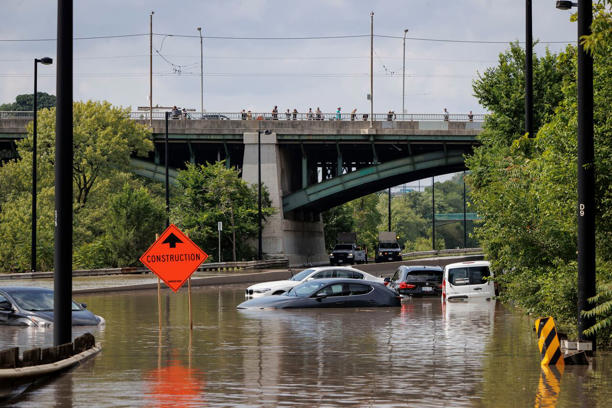Search This Blog
money saving tips for canadians, best saving tips for canadians of all ages. MoneySavings and Canadian news, financial news
Featured
article
- Get link
- X
- Other Apps
Toronto’s Union Station Transforms into an ‘Indoor Waterfall’ Amid Severe Flooding

Toronto, Canada, experienced a deluge of heavy rainfall that turned streets into rivers and left hundreds of thousands without power. The downtown region and parts of the Greater Toronto Area (GTA) were severely impacted by the storm. Among the striking visuals captured during this natural disaster was an unexpected sight at Union Station—an “indoor waterfall.”
The Scene at Union Station: Union Station, a bustling transportation hub, became an unlikely spectacle as water cascaded down its marble stairs. Videos and photos circulated on social media, showing the station’s grand interior transformed into a temporary waterfall. The scene served as a stark reminder of the devastating floods that hit Toronto back in 2013, prompting questions about the city’s preparedness for extreme weather events.
City Preparedness and Concerns: Despite having 11 years to address infrastructure vulnerabilities, Toronto faced similar flooding in familiar spots. Residents wondered why the city hadn’t taken more proactive measures to prevent such incidents. A city-based lawyer expressed frustration on social media, emphasizing the need for better sewer systems and safety precautions.
Environmental Factors: Toronto’s unique geography plays a role in its vulnerability to floods. Surrounded by the Greenbelt—a system of woods and wetlands—the city relies on natural absorption to manage excess water. However, recent decisions to open up these areas for development have limited their capacity to absorb rainfall effectively.
Traffic Disruptions: The floods wreaked havoc on Toronto’s transportation network. Major highways, including the Don Valley Parkway, were submerged, causing significant traffic disruptions. Lakeshore areas were also severely affected.
Conclusion: As Toronto grapples with the aftermath of this severe storm, the “indoor waterfall” at Union Station serves as a powerful visual reminder of the urgent need for better preparedness and sustainable solutions to mitigate the impact of extreme weather events.
Popular Posts
Stock Market Today: Apple Earnings Boost Spirits Amid Soft Jobs Report
- Get link
- X
- Other Apps
Stock Market Today: Nasdaq Surges and GameStop Skyrockets
- Get link
- X
- Other Apps


Comments
Post a Comment